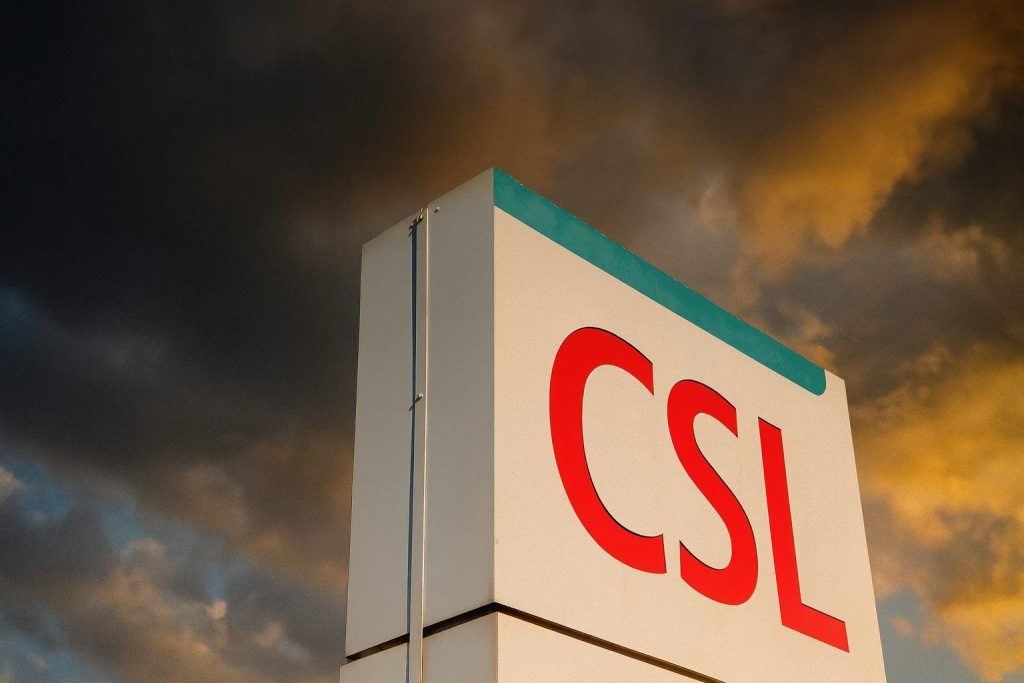ANZ Group Holdings Limited (ASX:ANZ) is trading softer on Friday, 28 November 2025, as investors continue to digest a heavy mix of dividend appeal, cost-cutting plans and regulatory scrutiny across Australia’s banking sector.
As of late trade in Sydney, ANZ shares are changing hands at around A$34.70, down roughly 1.1% for the session and a touch over 10% below the 52-week high of A$38.93 set on 12 November 2025. [1]
The move comes without any major new earnings announcement, but with one fresh governance filing, ongoing reaction to this month’s full-year result, and the countdown to the December dividend payment and AGM.
ANZ share price snapshot for 28 November 2025
Market data from multiple sources show ANZ trading in a relatively tight range today:
- Last price: about A$34.71
- Day’s range:A$34.66 – A$35.00
- Previous close (27 Nov):A$35.08
- Day’s change: roughly -0.38 / -1.07%
- Volume: ~1.5 million shares, below the recent daily average north of 5 million. [2]
On a 1-month lookback, today’s weakness extends a pullback from mid-November’s peak near A$39, but ANZ is still up around 10–11% over the past year and remains a core holding in major Australian indices and ETFs, including the S&P/ASX 200 and broad-market products like the iShares Core S&P/ASX 200 ETF (IOZ). [3]
Fresh news today: small director share purchase, no new shock
The only ANZ-specific ASX document dated 28 November 2025 is an Appendix 3Y Change of Director’s Interest Notice.
- Non-executive director Alison Gerry acquired 429.80 ANZ ordinary shares on-market on 24 November 2025 at an average price of A$34.87.
- Her indirect holding (via custodian Sharesies Australia Nominee Pty Ltd) increased from 813.38 to 1,243.18 ANZ shares. [4]
This is a very small trade in the context of ANZ’s roughly A$104 billion market capitalisation and almost 3 billion shares on issue, but it does represent a modest insider show of confidence rather than selling. [5]
Importantly for traders: there is no new price-sensitive earnings, capital or regulatory announcement today, so the share-price move looks to be driven by broader market factors and ongoing digestion of earlier news rather than a fresh shock specific to ANZ.
Recap: FY25 result – headline profit down, underlying earnings flat
The main fundamental driver of ANZ’s story into late November remains its full-year FY25 result (year ended 30 September 2025) and the updated “ANZ 2030” strategy.
Key numbers from the bank’s November result release and subsequent analysis: TechStock²+2ANZ+2
- Statutory profit: A$5,891 million, down 10% year-on-year.
- Cash profit: A$5,787 million, down 14%.
- Underlying cash profit (excluding significant items): about A$6.9 billion, essentially flat versus FY24.
- Revenue: up 7% to about A$22.2 billion.
- Operating expenses: up 11% to roughly A$11.8 billion, driven by restructuring, remediation and integration costs.
- Net interest margin (NIM): around 1.55%, reflecting pressure from cheaper mortgages and intense competition.
- CET1 capital ratio: about 12.0%, with a slightly higher pro-forma level after capital actions.
The large gap between underlying and reported earnings is driven by about A$1.11 billion after-tax in “significant items”, including: TechStock²+1
- Redundancy costs as ANZ cuts roughly 3,500 roles.
- A major regulatory settlement with ASIC.
- Winding down the Cashrewards business.
- Restructuring linked to the Suncorp Bank acquisition and other portfolio changes.
That combination explains why the market’s reaction to the result has been mixed: the core franchise is stable, but profitability is being squeezed by margin pressure, higher costs and regulatory clean-up.
ANZ 2030 strategy: cost-cutting, Suncorp integration and a higher ROE target
Alongside the numbers, CEO Nuno Matos has outlined an “ANZ 2030” transformation plan that is central to how investors are pricing the stock today. TechStock²+2ANZ+2
Headlines from the strategy:
- Focus on four pillars: Customer First, Simplicity, Resilience, Delivering Value.
- A$800 million of pre-tax cost savings targeted in the current financial year, largely from headcount reductions, simplification and exiting non-core businesses.
- Cancellation of the remaining ~A$800 million of a A$2 billion share buyback, with capital redirected into restructuring, technology and integration.
- Doubling expected Suncorp Bank synergies to around A$500 million per year once the acquisition is fully integrated.
- Ambition to lift return on tangible equity to 12% by 2028 and 13% by 2030, from roughly 10% today.
For the share price, this means execution risk is now front and centre. If ANZ delivers its cost-out and integration plan without further large penalties or operational missteps, today’s valuation could prove conservative. If it stumbles, investors may reassess both earnings and risk premium.
Dividend and yield in focus: 83c final payout in December
Income-oriented investors remain heavily focused on ANZ’s dividend profile, and this is a key part of the story on 28 November.
From ANZ’s official dividend timetable: [6]
- Final FY25 dividend:83 cents per share, 70% franked.
- Full-year FY25 dividend:166 cents per share, unchanged from FY24.
- Ex-dividend date:13 November 2025.
- Record date:14 November 2025.
- Payment date:19 December 2025.
At today’s price near A$34.70, that implies a trailing cash yield just under 5% before the value of franking credits, broadly in line with other big four banks. TechStock²+1
ANZ has also put a 1.5% discount on the next two Dividend Reinvestment Plan (DRP) rounds and indicated it does not plan to neutralise these via buybacks, effectively using the DRP to bolster capital while still paying out a high percentage of earnings. TechStock²+1
For today’s trading, it’s worth remembering that ANZ is already ex-dividend. The typical one-off price drop associated with going ex-div is in the rear-view mirror; flows now are more about valuation, news and macro sentiment than dividend-capture trades.
Regulation, culture and ESG: overhang heading into the AGM
Another major theme influencing ANZ’s risk profile – and potentially its valuation multiple – is regulatory and cultural remediation.
Recent disclosures and analysis highlight that: TechStock²+2Reuters+2
- ANZ has entered into a court-enforceable undertaking with the banking regulator APRA to fix long-standing non-financial risk management failings.
- An independent McKinsey review described a “good news culture” that discourages staff from escalating bad news, and pointed to diffuse accountability and bureaucratic decision-making.
- The bank has accepted a A$240 million penalty from ASIC, contributing to more than A$310 million in civil penalties since 2016.
- Sector-wide stress testing by APRA suggests the Australian banking system is resilient, but warns that high household debt and mortgage competition require disciplined lending standards.
On the ESG front, ANZ’s upcoming 2025 AGM on 18 December in Sydney will feature shareholder resolutions on climate, deforestation and governance – including calls for more disclosure on exposure to deforestation and stronger fossil-fuel policies. TechStock²+1
These resolutions are unlikely to pass outright, but strong support could influence ANZ’s future lending strategy and add a reputational dimension to the investment case.
Valuation check: is the market already pricing the risks?
Based on current data, ANZ is trading around: [7]
- ~17.8× trailing earnings and roughly 13–14× forward earnings.
- ~1.45× price-to-book value.
- A dividend yield near 4.7–5%, depending on the price snapshot used.
- About 10–11% below its 52-week high, but well above its April 2025 lows near A$26.
That puts ANZ in the middle of the pack for big four bank valuations: not glaringly cheap, but not obviously expensive given stable underlying earnings and strong capital – provided investors are comfortable with the execution and regulatory risks. TechStock²+2Intelligent Investor+2
Some broker commentary published this week notes that ANZ has been the best performer among the big four ASX 200 banks in FY26 to date, with an approximate 21% rise, even as the sector has experienced a reversal in performance after earlier strength. [8]
What today’s move may be telling investors
Given the lack of fresh price-sensitive news today, ANZ’s roughly 1% share-price fall on 28 November looks more like a sentiment and positioning move than a reaction to a specific announcement.
Several forces appear to be in play:
- Macro and sector tone: Australian banks remain highly sensitive to global yields, risk sentiment and any shift in expectations for future rate cuts by the RBA and major central banks. TechStock²+1
- Post-result digestion: Investors are still re-rating ANZ after the November result – balancing flat underlying earnings and a generous dividend against higher costs, regulatory penalties and a paused buyback. TechStock²+2ANZ+2
- Technical factors: After hitting a record high in mid-November, ANZ has pulled back alongside sector peers, with today’s trade extending a short-term consolidation phase rather than breaking the broader uptrend visible in 2025 price data. [9]
For now, the market seems to be saying: “show me”. ANZ’s valuation assumes that Matos and his team can execute a complex cost-cutting, cultural and technology transformation under intense regulatory scrutiny – without breaking the franchise or the dividend.
Key catalysts to watch after 28 November 2025
Looking beyond today’s trading session, several upcoming events and themes are likely to shape ANZ’s share-price direction:
- Dividend payment – 19 December 2025
Cash investors will watch for any surprises in DRP participation or commentary around capital management as the 83c final dividend is paid. [10] - 2025 AGM – 18 December 2025
Voting outcomes on ESG and governance resolutions, plus any fresh remarks from the board and CEO, could move sentiment, particularly among institutional investors focused on climate and risk culture. TechStock² - Regulatory updates from APRA and ASIC
Any further clarity on the court-enforceable undertaking, remediation timelines or new penalties will feed directly into investors’ risk assessments. TechStock²+1 - Progress on cost cuts and Suncorp integration
Concrete evidence that ANZ is delivering its A$800m cost-out and Suncorp synergy targets without operational disruption will be important in justifying current multiples. TechStock²+1 - Broker rating changes and sector rotation
With at least one broker highlighting ANZ’s relative outperformance among the big four, any further upgrades or downgrades – especially around net interest margin assumptions – could act as catalysts. [11]
Bottom line
On 28 November 2025, ANZ Group Holdings’ share price is modestly weaker in a relatively quiet news session for the bank itself. Under the surface, though, the story is anything but quiet:
- A high-yield, systemically important bank with strong capital and dominant positions in institutional and New Zealand banking.
- A full dividend maintained and an 83c final payout locked in for December.
- A multi-year transformation underway, involving job cuts, digital overhaul, integration of Suncorp Bank and a push toward higher-margin proprietary mortgage lending.
- A heavy regulatory and cultural clean-up, with APRA and ASIC watching closely and ESG activists targeting the AGM.
For traders, that mix tends to produce headline-sensitive volatility. For long-term investors, the key question is whether the ANZ 2030 plan and cost-out programme can turn today’s flat underlying earnings into sustainable growth – without eroding the bank’s reputation or regulatory goodwill.
References
1. markets.ft.com, 2. markets.ft.com, 3. markets.ft.com, 4. company-announcements.afr.com, 5. markets.ft.com, 6. www.anz.com, 7. markets.ft.com, 8. www.fool.com.au, 9. www.investing.com, 10. www.anz.com, 11. www.fool.com.au









